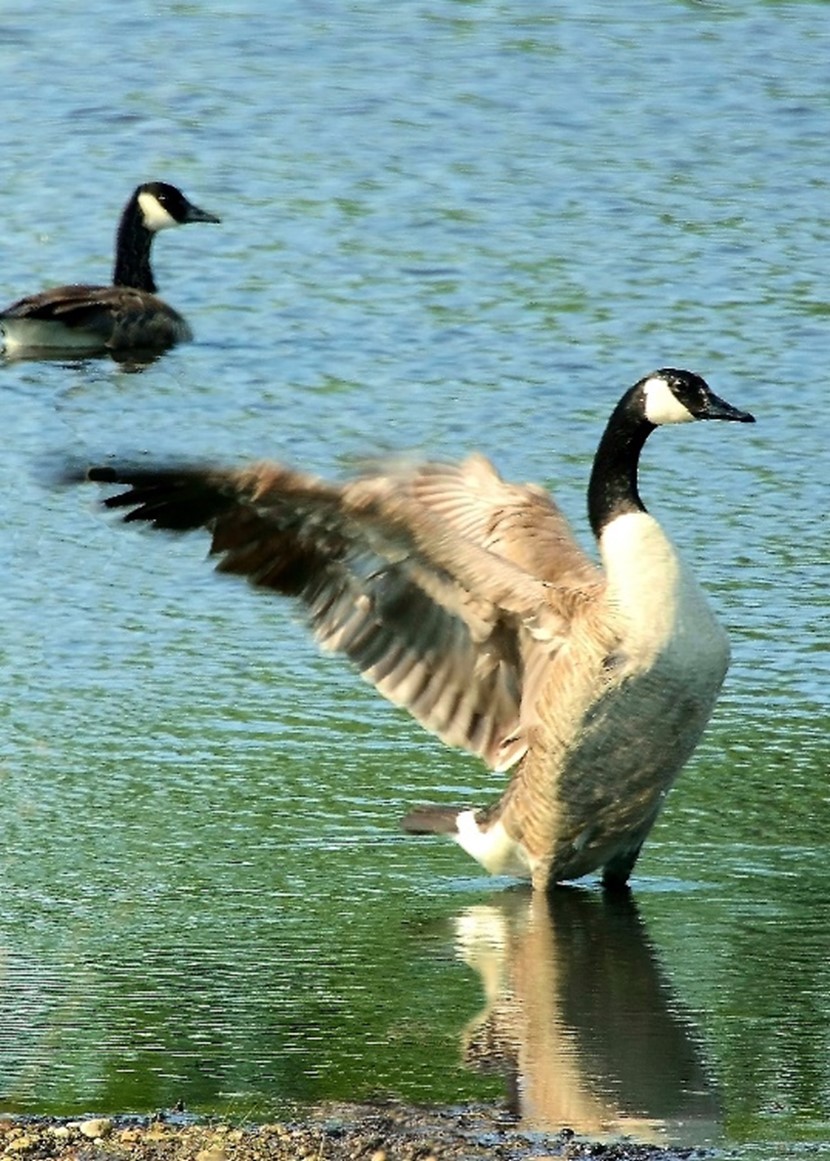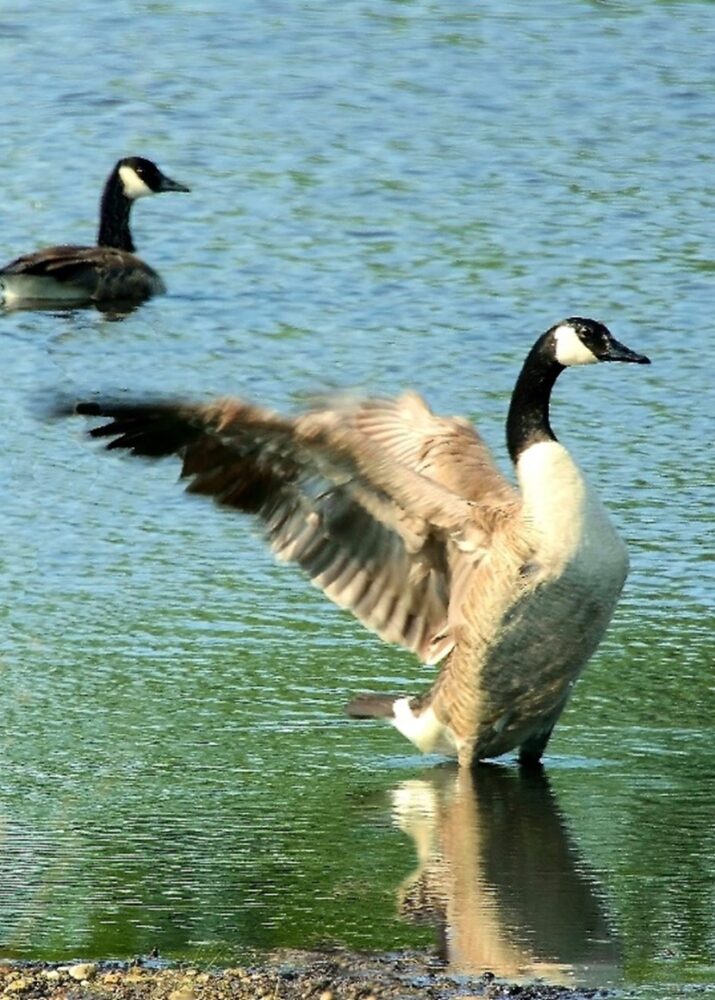
Rural Perspectives: Canada Geese are the largest goose species in the world

was thought to be extinct due to unregulated hunting and
habitat loss. Photo by Diane Constable
by Diane Constable
By the 1940s, the Canada Goose (Branta canadensis) was thought to be extinct due to unregulated hunting and habitat loss. In the early 1960s, a small flock was found in Minnesota, and with careful management, this goose species was brought back from the edge.
It’s a sign of spring when we hear Canada Goose honks and see their V formation pattern in the sky as flocks return to their nesting areas. These are mostly composed of family members.
By the age of two to three, these geese pick out a life mate and build a nest in marshy areas, often atop a muskrat house. The 10-12 eggs hatch in about 30 days. By two days old, the goslings leave the nest and are walking, swimming, and eating; by 70 days old, they are flying.
The young are vulnerable to predators, but the parents defend them from dangers by flapping powerful wings and hissing. They stay with their parents for a year and grow to 12 pounds. With a 5.5-foot wingspan, this is the largest goose species in the world.
They feed on short grasses and sedges, aquatic eel grass, and other vegetation, such as mowed grass on golf courses, parks and lawns, until fall when they often prefer grain seeds in harvested farm fields.
The Canada Goose is the only waterfowl that molts its flight feathers all at once, becoming flightless from late June to late July. In June, the geese without young to watch migrate farther north to spend their “molt time” near Hudson Bay Canada. Come fall, many flocks stay local as long as there is open water and food or migrate depending on the severity of the winter. Flocks from the Arctic do migrate to the southern U.S.
Fun Fact: A few adults will watch over several broods of goslings while other adults feed nearby.




